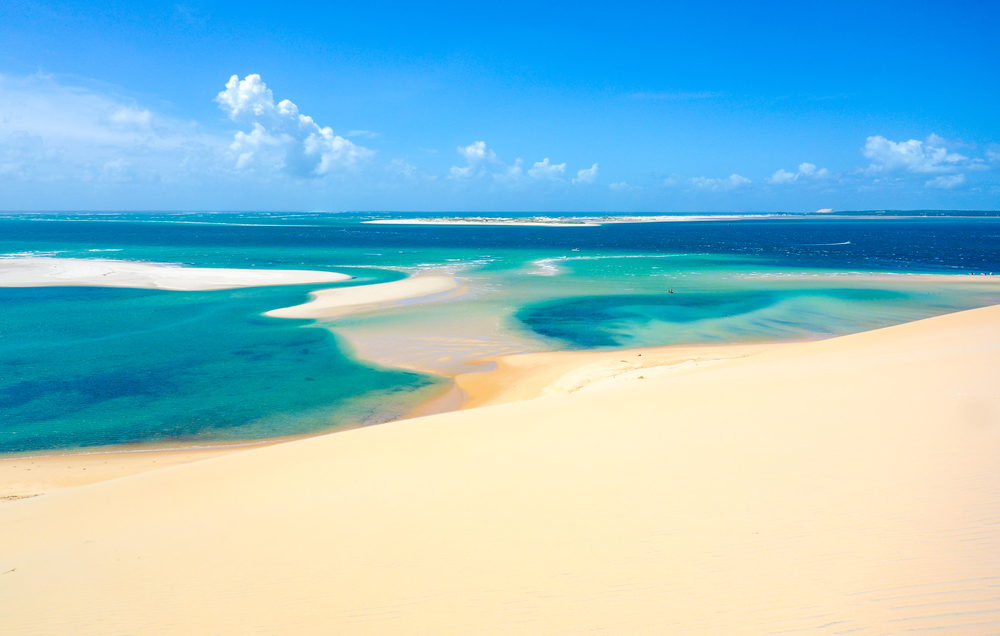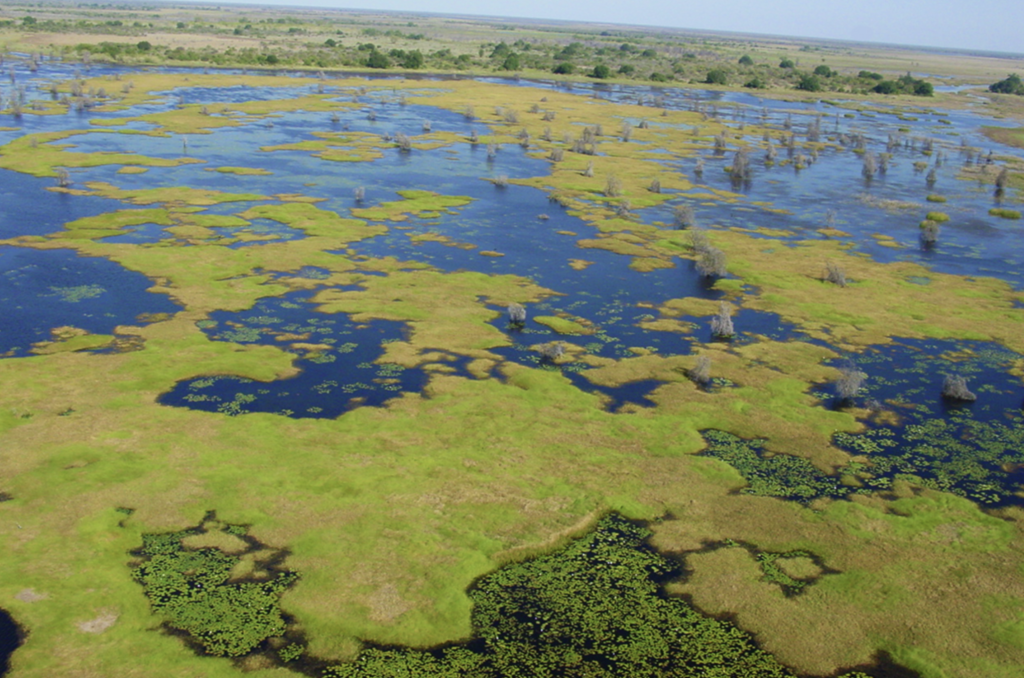Bazaruto Archipelago Overview
Bazaruto Archipelago National Park, locally known as “Parque Nacional do Arquipélago do Bazaruto,” is a breathtaking marine reserve located off the coast of Mozambique’s Inhambane Province. Established in 1971, it is Mozambique’s first marine national park and covers an area of approximately 1,430 square kilometers (552 square miles), including both land and sea. This protected area encompasses five islands—Bazaruto, Benguerra, Magaruque, Santa Carolina, and Bangue—along with surrounding coral reefs, seagrass beds, and crystal-clear waters, making it a paradise for marine life and eco-tourists.
The terrain of Bazaruto National Park is a stunning blend of white sandy beaches, towering sand dunes, freshwater lakes, and lush vegetation. The islands are covered with mangroves, palms, and grasslands that support a variety of terrestrial species. Beneath the waves, vibrant coral reefs and seagrass meadows provide critical habitats for an array of marine life. The park’s ecological diversity makes it one of the most significant marine conservation areas in the western Indian Ocean.
Bazaruto is home to a rich array of wildlife, both on land and underwater. The marine environment supports over 2,000 species, including the endangered dugong, five species of sea turtles, dolphins, and humpback whales. The coral reefs teem with tropical fish, while the seagrass meadows sustain herbivorous species like dugongs and green turtles. Birdlife is abundant on the islands, with flamingos, African fish eagles, and terns among the many species that frequent the park. The islands also host small populations of crocodiles and monitor lizards.
Visitors to Bazaruto Archipelago National Park can enjoy a variety of activities that showcase its natural beauty and biodiversity. Snorkeling and scuba diving are popular pursuits, offering opportunities to explore the park’s vibrant coral reefs and encounter marine life. Boat tours provide scenic views of the islands and the chance to spot dolphins and whales. Fishing, kayaking, and stand-up paddleboarding are also available, catering to adventure-seekers. On land, guided walks allow visitors to explore the islands’ unique landscapes and learn about their ecological and cultural significance.
Despite its status as a marine sanctuary, Bazaruto faces several conservation challenges, including overfishing, pollution, and the impacts of climate change, such as rising sea temperatures and coral bleaching. Efforts led by Mozambique’s Administração Nacional das Áreas de Conservação (ANAC) focus on sustainable tourism, habitat restoration, and protecting critical species such as dugongs and sea turtles. Community-based initiatives aim to involve local populations in conservation, providing them with alternative livelihoods and fostering sustainable resource use.
Bazaruto Archipelago National Park is a jewel of Mozambique’s natural heritage. Its breathtaking scenery, extraordinary marine biodiversity, and cultural significance make it a must-visit destination for nature enthusiasts. Protecting this unique park ensures the survival of its ecosystems and contributes to global efforts to conserve marine and coastal habitats.











































































